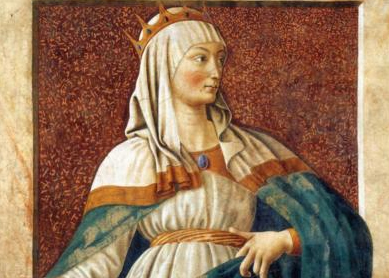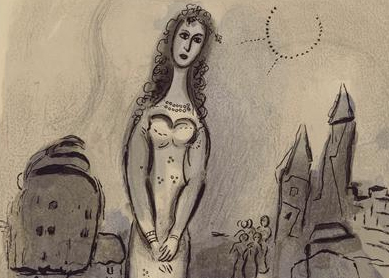In the biblical book that bears her name, Esther is a beautiful young Jewish woman who lives with her cousin and foster parent, Mordecai, in the Persian royal citadel of Susa. We are first introduced to her as she is taken into the palace by the Persian king Ahasuerus to become his new wife (Esth 2:5-18). The narrative takes a turn when Mordecai inflames the wrath of the king’s highest courtier, Haman (Esth 3:1-6), who retaliates by manipulating the ever-pliant King Ahasuerus to issue a lethal edict that will not only destroy Mordecai but exterminate all the Jews (Esth 3:7-15). At the risk of her own life, Esther bravely intervenes on behalf of her people to save them from death (Esth 5:1-8, Esth 7:1-2) and is thus remembered as a heroine in the Jewish festival of Purim.
Who was Esther?
The question of who Esther was is more complex than it first appears.
Did Esther exist? Mainstream biblical scholars do not regard Esther as an historical figure, because of a number of historical improbabilities in her book and the lack of external evidence corroborating her existence. Rather, scholars judge her book to be a Jewish novel in miniature about the dangers of life in the Diaspora, which would serve to establish Purim.
If, then, Esther is a literary (rather than a historical) character, what kind of literary character is she? She has been called a pawn, a murderer, and a heroine.
The debate about Esther’s character arises, in part, because at Mordecai’s behest she keeps her Jewish identity secret while in the palace (Esth 2:10, Esth 2:20). Some interpreters doubted that she kept Jewish dietary regulations and found the notion that she married the Gentile king abhorrent; they feared that Esther had assimilated to the ways of the Gentile palace. At stake is the basic question whether Esther provided a suitable model for Jews who lived in a foreign land as they negotiated the challenges of living as a minority within a dominant majority.
Other interpreters, in contrast, felt certain that Esther was a fitting model and should be remembered as a heroine. They suggested that she was secretly devout and lived with the terrible tension of double consciousness. They pointed to her bravery when Mordecai asks her to intervene with King Ahasuerus to counter the lethal edict; Mordecai wonders if it is perhaps for just such an occasion—the chance to save her people—that Esther rose to her current position in the foreign court (Esth 4:13-14). Resigned to her fate, if not newly emboldened, Esther risks her life to go before the king (Esth 4:1-5:4). Over the course of two carefully orchestrated banquets (Esth 5:5-8, Esth 7:1-10), she manages to win over King Ahasuerus, undo Haman, and intervene on behalf of her people. Thus Esther stands, for many, as a fitting example of savvy and courage in the face of the dangers of diasporic living.
Where is God in the book of Esther?
The careful reader of Esther’s book is in for a surprise: God does not appear anywhere in the book. This is another reason that early interpreters found Esther and her book troubling. Unlike the stories of Abraham and Moses, God does not show up to guide Esther through her tribulations in a foreign land. And unlike Joseph, who perceives God’s guiding hand in the events of his life, Esther does not appeal to or even refer to God once. Other interpreters countered that when Mordecai intimates that perhaps Esther has risen to her station within the palace in order to be in the right place at the right time, he may be referring (obliquely) to divine providence; if so, the theology is one more of coincidence than of direct intervention, of a god who works behind the scenes, but also through human initiative, on behalf of the people of Israel. This is an even more subtle picture of the coupling of divine orchestration and human agency than we find in other Jewish Diaspora stories, like those of Joseph and Daniel.
In part because of questions about Esther’s character and God’s place in the book, the book of Esther had ambiguous canonical status for centuries. For a long while, an alternate edition of her story in Greek held sway with certain Jews in the Greek-speaking Diaspora; this version not only makes repeated mention of God but also includes six longer passages not found in the Hebrew version. The Roman Catholic canon preserves the Greek Esther among its deuterocanonical works as “Additions to Esther.”





